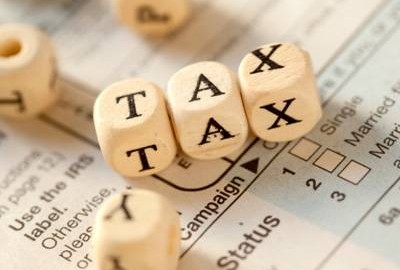Introduction
Trinidad and Tobago (T&T) is a twin-island Republic located in the southern Caribbean with a population of approximately 1.3 million. Unlike most of the tourism-based economies in the Caribbean, T&T’s economy is heavily dependent on the energy sector. T&T has transitioned from a primarily oil-based economy to a natural gas-based one with major investments in petrochemicals. In this regard, T&T is currently the world’s largest exporter of methanol and is a leading exporter of liquefied natural gas (LNG). As a result, T&T is one of the wealthiest countries in the Caribbean and Latin America as measured by per capita GDP.[1]
Over the past quarter century, the T&T government has undertaken a number of reforms to liberalize the economy so as to facilitate foreign investment in the country. These reforms include the removal of most restrictions on the ownership of property by non-nationals[2] and the virtual abolition of foreign exchange controls.[3]
In addition, T&T has several advantages when compared to other countries in the region, including:
- Availability of skilled manpower;
- Availability of relatively good telecommunications and other infrastructure;
- Relatively low energy costs; and
- Strategic location at the crossroads of the Americas.
In the circumstances, T&T is well-placed to attract foreign investments.
Establishing a Business in T&T
Generally, foreign investors may carry on business in T&T through a locally incorporated company or by registering an External Company (Branch) in T&T. The process of incorporating a subsidiary company or registering a branch is relatively straightforward and inexpensive. On average, incorporating a T&T subsidiary company would take approximately one week while the process of registering a T&T branch of a foreign company may be accomplished in about two week time.
Generally, companies are required to be registered for corporation tax, employee tax (“PAYE”) and national insurance (“NIS”). Depending on the level of their business activity, they may also have to register for value added tax (“VAT”). These registrations are fairly uncomplicated and can be accomplished within a reasonable period of time. Generally, one can obtain registration in respect of corporation tax, PAYE and NIS within one day while registration for the purposes of VAT can usually be completed within one week.
Taxation Overview
The current rate of corporation tax for most companies operating in T&T is 25%. Companies in the petrochemical sector[4] are taxed at the rate of 35% while companies engaged in the petroleum production business and refining businessare subject to tax under a separate regime altogether.[5]
Payments of dividends to non-residents are subject to a 10% withholding tax. Where dividends are paid to a non-resident parent company, a reduced rate of 5% is applicable. Other payments to non-residents (interest, rentals, royalties, management charges) are subject to tax at a rate of 15%. It should also be noted that T&T has entered into Double Taxation Treaties with various countries[6] and such treaties may provide for reduced rates of withholding tax.
Capital gains are not generally subject to tax in T&T. There is, however, a regime for the taxation of short-term capital gains which are defined as the gains accruing on the disposal of an asset within 12 months of its acquisition. Such short-term capital gains are subject to tax at the rate of 25%.
The other principal taxes impacting on businesses in T&T include the following:
- A business levy of 0.2% on the gross sales or receipts of a company. However, companies are only liable to pay the higher of its business levy or corporation tax liability. Further, companies are exempt from business levy for the first 36 months following registration.
- A green fund levy amounting to 0.1% of a company’s gross sales or receipts is payable by all companies.
- VAT, at a rate of 15%, is due on the supply of goods and certain prescribed services. Where a company is registered for VAT, however, it would be entitled to recover all of the VAT it has incurred in the course of its operations.
- An ad valorem stamp duty is imposed, at varying rates, on certain transactions including the sale or transfer of property or shares.
Free Zone
The T&T Free Zones regime was designed to encourage local and foreign investment in export-driven projects that create jobs, develop skills and create external markets for products and services. Such investors benefit from various fiscal incentives provided for in the relevant legislation. It should be noted that companies engaged in the exploration and production of petroleum and natural gas and the manufacture of petrochemicals do not qualify for free zone status in T&T.
Approved free zone companies are exempt from corporation tax, business levy and green fund levy on the sale of goods and the export of services. Distributions and certain payments also qualify for relief from withholding taxes. Approved companies are also exempted from Customs Duties on imported goods and materials. Approved companies also benefit from an exemption from property taxes.
The T&T Government recently signaled its intention to encourage the building of centralized service hubs to support the financial services sector. This involves the consolidation by financial institutions of national and regional back-office operations in T&T. In the circumstances, such enterprises will provide services to customers in T&T as well as the wider region. These operations may include data base management, accounting, legal, HR support and credit card processing, among others. The intention is to utilize the existing free zone regime in order to incentivize these activities.
Manufacturing
Companies engaged in manufacturing may qualify for approval under the free zone regime. Additionally, manufacturers are entitled to accelerated capital allowances in the form of a 90% initial allowance on the capital expenditure incurred in acquiring plant and machinery. Companies engaged in manufacturing may also seek approval under the Fiscal Incentives Act. Benefits available to such companies under this legislation include relief from customs duties and VAT on the importation of plant and machinery as well as total or partial relief from withholding tax on distributions.
Tourism Projects
Companies in the tourism sector may access benefits under the Tourism Development Act for approved tourism projects (which are not limited to hotels but include ancillary facilities such as marinas, theme parks, golf courses). Approved companies may be granted corporation tax holidays of up to seven years as well as relief from customs duties on imports. A tax exemption on interest received in respect of loans used for approved projects is also available.
Immigration Issues
Non-residents can generally freely enter T&T for business meetings. A work permit will, however, be required where a non-resident person intends to work in T&T for a period exceeding 30 days in any 12 month period. In addition to work permits, nationals of certain countries are required to obtain an entry visa to visit T&T. Work permit applications are made to the Ministry of National Security and normally take between 4-6 weeks to be issued.
General Environment
T&T is a parliamentary democracy and has a stable political climate. The legal system is based on the English common law system. The final Court of Appeal is the Judicial Committee of the Privy Council in the United Kingdom. The Courts in T&T are independent though the judicial process tends to be lengthy.
In recent years, the T&T economy has been characterized by moderate inflation and relatively low rates of unemployment.[7] The defining feature of the financial system in the past few years has been a low interest rate environment combined with high liquidity in the system. Total public sector debt currently amounts to 39.9% of GDP. The country’s investment grade status is currently rated “A” (Standards & Poor) and “Baa2” (Moody’s).
The country is heavily dependent on the energy sector (40% of GDP, 50% of Government revenues, 80% of exports), however, and its overall economic performance is closely linked to energy prices. As a result, the Government is keen to promote investments in the non-energy sector as a means to diversify the economy.
T&T has an established, well regulated financial sector that includes commercial banks (including the local operations of international banks), insurance companies and a stock exchange. Further, there are no foreign exchange controls in T&T and profits may be freely repatriated.
Investors have access to a well-educated labour force. Tertiary education is free in T&T and this has resulted in ever increasing numbers of university and technical graduates entering the work force. There is a minimum wage in T&T that is currently set at TT$15 per hour.
T&T has two international airports with a number of airlines offering direct and connecting flights to all major international destinations. T&T also has two strategically located international ports (Port of Spain and Point Lisas). T&T also has a modern communications network with ready access to land-line telephones, mobile telephones as well as the internet.
In conclusion, T&T has made significant strides in recent times to transform the business environment of the country so as to attract foreign investment.
[1] In 2014, according to information from the International Monetary Fund, T&T had a GDP (nominal) per capita of US$21,311.
[2] Non-nationals of T&T may purchase up to five acres of land for commercial purposes without having to obtain a licence.
[3] The T&T dollar is the subject of a managed float and the current rate of exchange is approximately TT$6.35 to US$1.
[4] The 35% Corporation Tax rate is applicable to companies engaged in (a) the liquefaction of natural gas; (b) manufacture of petrochemicals; (c) physical separation of liquids from a natural gas stream and natural gas processing from a natural gas stream; (d) transmission and distribution of natural gas; and (e) wholesale marketing and distribution of petroleum products.
[5] Petroleum production companies are subject to petroleum profits tax at the rate of 50% of chargeable profits, unemployment levy at the rate of 5% of chargeable profits and supplemental petroleum tax with rates based on weighted crude oil prices.
[6] Currently T&T has entered into Double Taxation Treaties with Brazil, Canada, CARICOM, China, Denmark, France, Germany, India, Italy, Luxembourg, Norway, Spain, Sweden, Switzerland, the United Kingdom, the United States and Venezuela.
[7] The inflation rate is currently at 5.6% while the unemployment rate is 3.7% (Central Bank of Trinidad and Tobago Economic Bulletin: July 2015).










